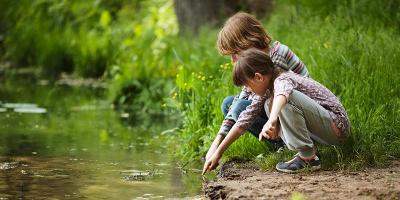Net Benefit for Biodiversity

All planning approvals in Powys must deliver a Net Benefit for Biodiversity.
Unlike some areas, Powys does not use a formal metric. Instead, we take a site-by-site approach, encouraging thoughtful, practical improvements that support local wildlife and ecosystems.
If you're working with an ecologist, they should recommend suitable enhancements based on site surveys. But not all applications need an ecologist. That's why we've created a Biodiversity Net Benefit for Householders guide to help you choose simple, effective measures—like bird boxes, native planting, or wildlife-friendly fencing.
Biodiversity Net Benefit for Householders
Why Biodiversity Matters
Wales' wildlife is in decline—one in six species is at risk of extinction. Everyday choices, including how we build and develop land, impact the natural world. That's why Powys County Council is committed to ensuring all planning applications deliver a Net Benefit for Biodiversity.
This means that even small developments—like home extensions or conversions—should include measures that support and enhance local wildlife.
What Is Biodiversity Net Benefit?
Biodiversity Net Benefit means your development should:
- Avoid harming wildlife and habitats.
- Mitigate or compensate for any unavoidable impacts.
- Enhance the site to improve biodiversity.
You don't need to be an expert or hire an ecologist for most householder applications. There are many simple, effective ways to support nature as part of your project.
Simple Ways to Support Biodiversity
Here are some ideas you can include in your planning application:
Bat Boxes and Access Points
- Install bat boxes near hedgerows or tree lines, 4m above ground, away from lights.
- Create bat access gaps under roof tiles (avoid breathable membranes).
Bird Boxes
- Fix boxes 2-4m high on trees or walls, facing north or east.
- Consider swift bricks or swallow nest cups under eaves.
Hedgehog Highways
- Cut small holes in fences to allow hedgehogs to roam safely between gardens.
Bee Bricks
- Integrate bee bricks into walls to support solitary bees like red mason bees.
Wildflower & Pollinator Planting
- Use native plants and climbers like honeysuckle or lavender to attract insects and birds.
Tree & Hedgerow Planting
- Plant native trees and shrubs to provide food and shelter for wildlife.
Bug Hotels and Log Piles
- Create safe spaces for insects and amphibians using logs or bug hotels.
Pond Creation
- A shallow pond supports frogs, insects, and birds.
Reduce Mowing
- Let grass grow longer to support pollinators and wildflowers.
Planning Policy and Legal Context
Under Planning Policy Wales (Edition 12) and the Environment (Wales) Act 2016, all developments must maintain and enhance biodiversity. Applications that fail to include biodiversity enhancements may be refused.




